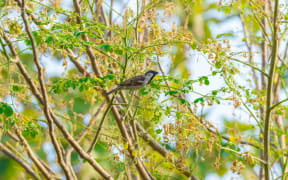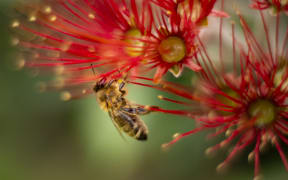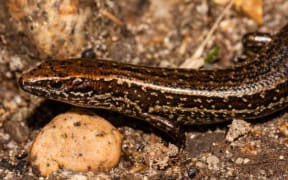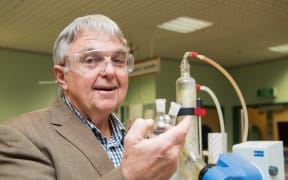Scientists are calling on kids to collect samples of grass for 10 weeks from within their neighbourhood bubble and store them in their freezer.
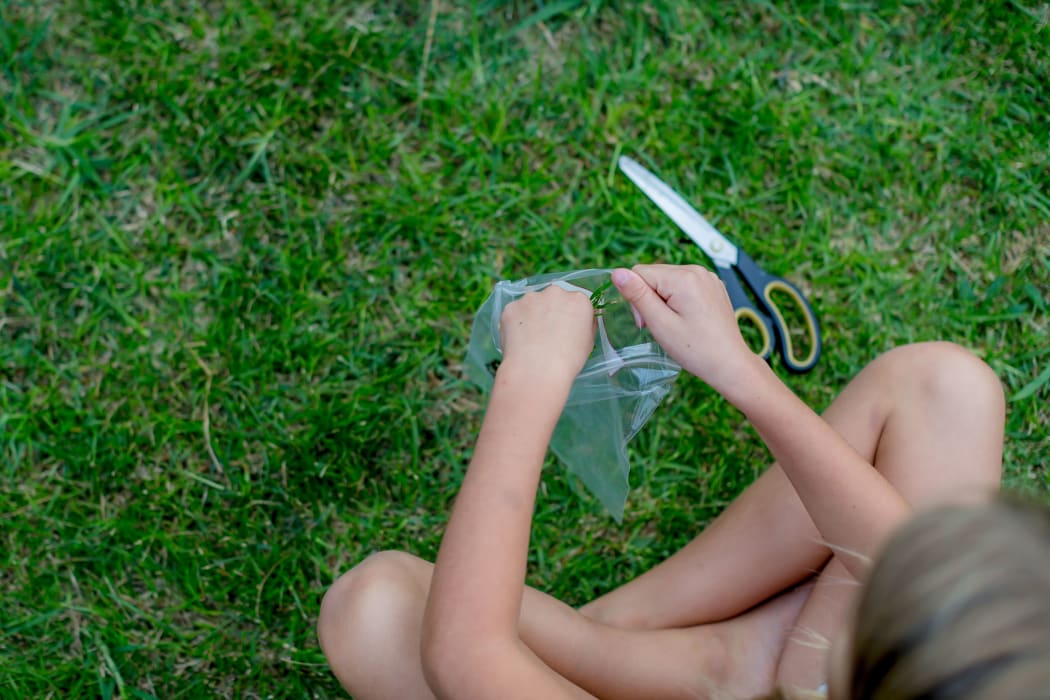
Young citizen scientists are being asked to cut and freeze grass to help measure changes to fossil fuel levels during and after lockdown. Photo: Ministry for the Environment
The project, called The Great Greenhouse Gas Grass Off, calls for samples from a multitude of spots around the country to test changes in carbon emissions.
Once they've all been collected and stored, radiocarbon experts at GNS Science will be able to work out the level of fossil fuels - or carbon dioxide - in each sample.
Leading the project is radiocarbon scientist Jocelyn Turnbull, who said grass is an effective way of studying rapid changes to CO2 levels because it grows so quickly.
She said plants take in CO2 during the process of photosynthesis - a term children may know from science class - and so can provide a reliable record for studying levels of fossil fuels over time.
"Normally we collect flasks of air and bring them back to the lab and analyse them but we haven't been able to do that during lockdown.
"So plants take carbon dioxide out of the air and faithfully record the radiocarbon content of that carbon dioxide, so we can use that plant material as another way of sampling the air."
Children, families, or close bubbles taking part should collect grass from the same spot. They should take the first sample now, then another on Anzac Day, then weekly for eight more weeks.
The sample could be from your front or backyard, the berm in front of your house or a park or grass verge nearby, Turnbull said.
"We're probably going to end up measuring something like 10 sites from every city but we definitely want to get more than that. Even when we collect the samples ourselves not all of them are good, for all sorts of complicated reasons."
Those who live in the inner city, near a park, shopping centre, motorway, busy road or hills around a city are especially encouraged to take part as these are likely to show the largest changes in CO2 levels.
Traffic is down somewhere between 70 and 90 percent in most parts of the country, she said. This is based on air pollutant levels - which Niwa has been recording in major cities.
But the emissions from traffic linger far longer than the traffic itself.
Turnbull expected there would be some impact from lockdown, though it's unlikely to last.
"We're expecting to see overall maybe a 10 to 20 percent drop from CO2 emission in cities during the lockdown and that's pretty consistent with cities overseas."
"It certainly will reduce our emissions from this year which is good, but I expect that people will mostly go back to normal and there won't be a big change."
She said if people will begin working from home more often, that may have a more lasting impact, "because people driving to work is actually one of the biggest sources of CO2 emissions in New Zealand and around the world".
She said the project was a chance for children to take part in a science experiment at home, and she had roped in her son.
"It's been really fun to do this with my son - we go out once a week and we make sure we find the same patch of grass and we trim the regrowth and take some photos and - it's fun."
Turnbull said, at the end of the experiment, samples will be carbon dated at the GNS Radicarbon Lab in Wellington.

